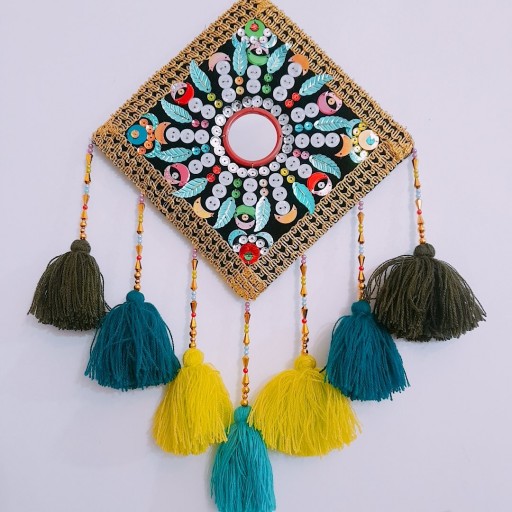The coin embroidery of Sistan and Baluchistan, Iran, is a captivating blend of tradition, artistry, and resourcefulness. Here’s a glimpse into this unique art form:
A Sparkling Fusion:
Coins as embellishments: Unlike conventional embroidery using thread, this technique incorporates coins, primarily old silver or copper ones, as the primary embellishment. These coins are sewn onto fabric, creating shimmering, metallic patterns.
Geometric and floral motifs: The designs often feature geometric shapes like squares, triangles, and diamonds, alongside floral patterns like stars and vines. The arrangement of the coins creates a mesmerizing interplay of light and shadow, highlighting the intricate designs.
Practicality meets artistry:Coin embroidery arose partly from the need to recycle worn-out coins. Over time, it evolved into a highly skilled art form, showcasing the creativity and craftsmanship of Baluchi women.
Cultural Significance:
Symbol of wealth and status: Traditionally, the use of silver or copper coins in embroidery indicated the wearer’s wealth and social standing. The more intricate and elaborate the design, the greater the perceived status.
Adorning special occasions: Coin embroidery was primarily reserved for special occasions like weddings, festivals, and religious ceremonies. It added a touch of elegance and grandeur to traditional garments.
Cultural heritage preservation: Today, coin embroidery continues to be practiced by some artisans in Sistan and Baluchistan, keeping this unique cultural heritage alive for future generations.
Challenges and Preservation Efforts:
Accessibility of materials:Finding old silver and copper coins can be difficult, leading some artisans to use modern coins or other materials, altering the traditional aesthetic.
Competition and market reach: Modern embroidery styles and readily available materials pose challenges for coin embroidery to compete in the market. Preserving this art form requires promoting its unique value and supporting artisans through fair trade practices.
Skill and knowledge transfer: Encouraging younger generations to learn and practice coin embroidery is crucial for its long-term survival. Workshops and educational programs can help ensure the transmission of this traditional skill.
Appreciating the Art:
Museums and exhibitions: Several museums in Iran, like the National Museum of Iran, showcase examples of coin embroidery, offering a glimpse into this fascinating art form.
Supporting artisans:Consider purchasing coin embroidery pieces directly from artisans or through reputable online platforms that support fair trade practices.
Raising awareness: Sharing information and stories about coin embroidery can help raise public awareness and appreciation for this unique cultural treasure.
By understanding and appreciating the beauty and cultural significance of coin embroidery, we can contribute to its preservation and ensure it continues to sparkle in the tapestry of Sistan and Baluchistan’s rich heritage.


